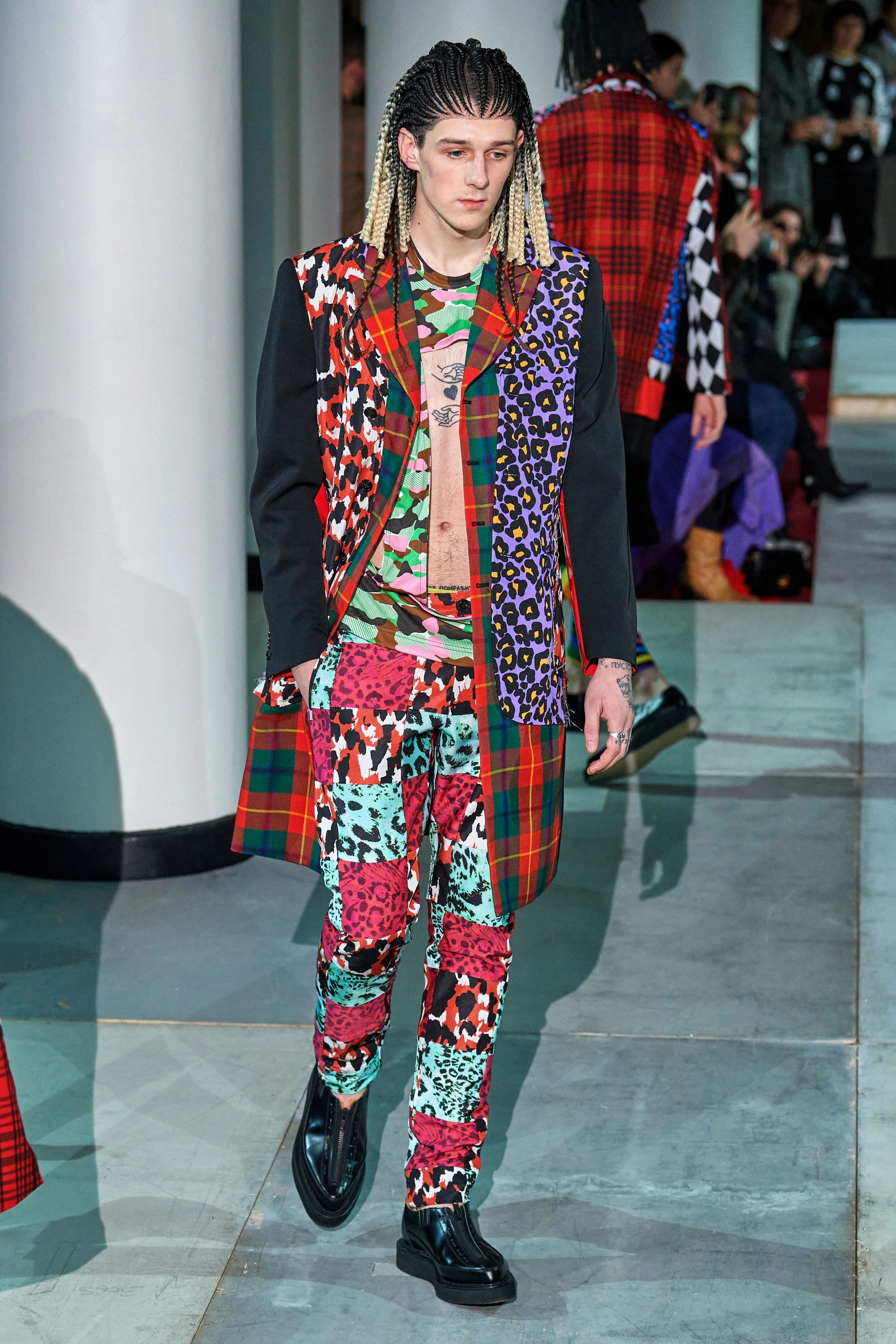Cultural Appropriation In Fashion
Introduction
In my few years of covering fashion, I have noted that cultural appropriation is one of the most divisive issues in the fashion industry. From Gucci to the likes of Prada, most of the fashion powerhouses have fallen victim to this issue. Cultural appropriation is defined as the act of taking or using things from a culture that is not your own, especially without showing that you understand or respect this culture. One of the key skills of a fashion designer is to take inspiration from personal experience, culture and history and transform these into creative expressions in garment form. With more immigrants flocking to the western world for greener pastures, it’s more important now than ever before that brands obtain cultural literacy.
A look from the Comme Des Garcons Homme Plus autumn winter 2020 collection featuring a model with black and blonde cornrows. This sparked outrage on social media.
Photo by Filippo Fior.
Doing it wrong
Recently, Comme des Garçons has been under fire after models were seen wearing lace-front cornrow wigs at their autumn winter 2020 menswear show. The work of Rei Kawakubo (the creative director of Comme des Garçons) is very unconventional and avant-garde. It has a deeper meaning when viewed with a trained eye. Unfortunately, this may be lost in translation in the eyes of a person who is not well versed in fashion. Brands must now gain the cultural literacy to understand that most consumers do not consider nuance when looking at garments. The Christian Dior cruise 2020 collection designed by Maria Grazia Chiuri took inspiration from Ivory Coast, using traditional prints and silhouettes from the region. This collection was a slap in the face to many Africans as the designs seen in the Dior collection had too much of a resemblance to designs that can be found on the streets in many west African nations sold by supremely talented villagers trying to make ends meet. Dior simply stole the designs and inflated the price on a design and culture that was not explored or understood, only plagiarised for economic gain. It showed a lack of innovation and came across as a lazy attempt at a cash grab.
The issue with the use of traditional Egyptian hair by Comme des Garçons is amplified by the lack of Egyptian models used in this specific show along with a long-standing history of Comme des Garçons refusing to cast African models despite constantly pulling cultural references from Africa. This signifies the willingness to pick something up from a different culture without addressing the issues faced by members of the referenced culture. Afro hairstyles are called unprofessional in the workplace, with a stigma that comes with the perception of being smelly and dirty. This phenomenon presents the perception to consumers that the use of the hairstyle was just for a specific “aesthetic effect” without the intention to respect or appreciate the culture the reference was rooted in. In many of these cases ill intention is not meant but a lack of cultural literacy is present. With cultural illiteracy it is easy to see how a good intention by Comme des Garçons can quickly be viewed as cultural appropriation. The line exists in the feeling and emotions that a designer can create using garments as the medium of translation.
A look from the Dries Van Noten fall winter 2015 collection featuring a lot of Asian inspired designs.
Photo by Yiannis Viamos.
Doing it right
So, who is appreciating culture as opposed to appropriating it? Haider Ackermann and Dries Van Noten are two fashion designers that have a unique ability to tastefully pull references from different regions. There is a reason why Haider Ackermann in his transformation of traditional Japanese kimono silhouettes and Dries Van Noten in his use of traditional Asian prints and embroidery techniques have never been shamed for cultural appropriation. What Haider Ackermann and Dries Van Noten have in common is the true appreciation of the culture they use as references in design. Both designers constantly travel the world. Haider Ackermann is reputed for immersing himself in Japanese culture on numerous occasions to attain a pure understanding of the history. There is a true emotion and understanding that comes with immersing oneself within a culture that cannot be bought or replicated by viewing images and videos online. This immersive experience translates in the design process. It is easy to see when a designer understands and appreciates a culture as opposed to taking a cue from an aspect that looked cool on Instagram. In the current sphere of fashion today, it is important that designers put value on an emotion that comes with first-hand experience of a cultural reference.
In the age of social media and a rapid paced fashion industry, is this asking too much of fashion designers? Only time will tell.
References
Cambridge. Cultural appropriation. [Online]. [Accessed 20 January 2020]. Available from: https://dictionary.cambridge.org/dictionary/english/cultural-appropriation
Brunker, A. 2020. Comme des Garçons is being called out for cultural appropriation on the runway. [Online]. [Accessed 20 January 2020]. Available from: https://www.instyle.com/news/comme-des-garcons-cultural-appropriation-runway-hairstyle

